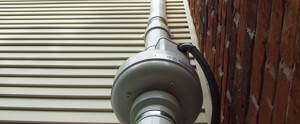WHO slashes radon limit in homes, cites lung cancer
WHO slashes radon limit in homes, cites lung cancer
* New WHO maximum is one-tenth previous level
* Radon "major and growing public health threat in homes"
* Radon exposure causes 3-14 percent of lung cancers
GENEVA (Reuters) - The World Health Organisation (WHO) has drastically cut the maximum amount of radon -- a naturally occurring gas -- that should be permitted in homes because of strong evidence it causes lung cancer.
In a WHO Handbook on Indoor Radon issued on Monday, it called for public health authorities and the construction industry to make great reductions in exposure to radon, calling it a "major and growing public health threat in homes."
Radon is a cancer-causing radioactive gas that humans cannot see, smell or taste. It arises from the natural decay of uranium and can seep into homes through cracks in basements or cellars.
"Radon is the second most important cause of lung cancer after smoking in many countries," said Dr. Maria Neira, director of WHO's public health and environment department.
Most radon-induced lung cancers occur from exposure to low and medium doses in residential buildings, she said in a statement on the handbook, drawn up by more than 100 experts.
Policy makers and the construction industry must reduce exposure to radon through tougher building codes for new homes and mitigation programmes for existing ones, she said.
The WHO's new recommended maximum level of radon gas is 100 becquerels per cubic metre -- one tenth of its previously recommended maximum of 1,000 becquerels, issued in 1996.
If a country cannot meet the new standard, levels should not exceed 300 becquerels per cubic metre, it said, noting that the risk of lung cancer rises 16 percent per 100 becquerels.
"Recent studies on indoor radon and lung cancer in Europe, North America and Asia provide strong evidence that radon causes a substantial number of lung cancers in the general population," the 110-page handbook said, referring to countries including Britain, Canada, China, France, Germany and the United States.
An estimated 3 to 14 percent of lung cancers are attributable to exposure to radon, it said.
Many countries are aware of the risks associated with radon and have already reduced their maximum allowed levels to 200-400 becquerels, according to WHO expert Dr. Ferid Shannoun.
"Studies show that radon is the primary cause of lung cancer among people who have never smoked," the WHO said.
People who smoke or who have smoked in the past suffer higher levels of radon-induced lung cancers because of a "strong combined effect of smoking and radon," it added.
Higher radon concentrations can be found in mines, caves and water treatment facilities, according to the Geneva-based WHO.
"Radon gas enters houses through openings such as cracks at concrete floor-wall junctions, gaps in the floor, small pores in hollow-block walls and through sumps and drains," it said.
Levels can be lowered through very effective yet relatively inexpensive techniques such as sealing cracks in floors and walls and increasing the ventilation rate of the building.




